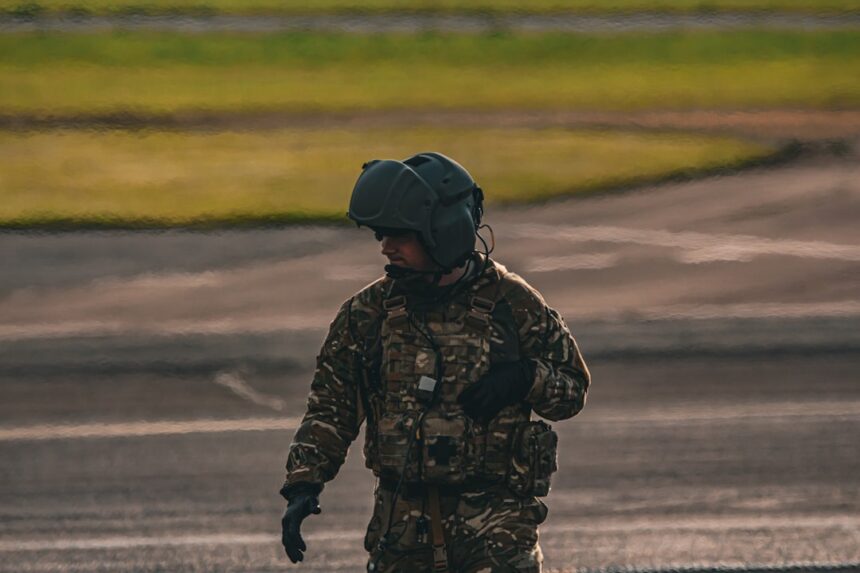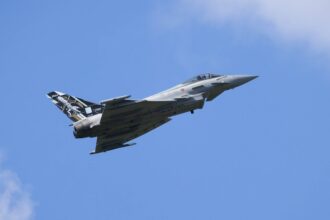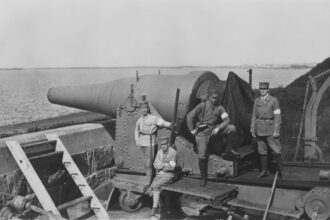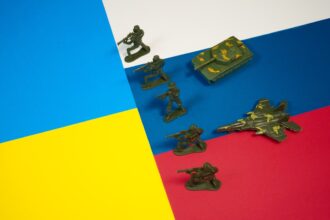Studying military history is crucial for understanding the complexities of human conflict and the evolution of societies. It provides insights into the strategies, tactics, and technologies that have shaped nations and influenced global dynamics. By examining past military engagements, scholars and military professionals can glean valuable lessons that inform current practices and future decisions.
The study of military history is not merely an academic pursuit; it serves as a vital tool for leaders and policymakers who must navigate the intricate landscape of international relations and security. Moreover, military history offers a lens through which to view the broader human experience. It reflects the values, beliefs, and motivations of societies at different points in time.
This understanding fosters a more nuanced perspective on contemporary conflicts, encouraging critical thinking about the implications of military action in today’s world.
Key Takeaways
- Studying military history is important for understanding the evolution of warfare and learning from past successes and failures.
- Ancient warfare, particularly the strategies of the Greeks and Romans, provides valuable lessons in tactics, discipline, and organization.
- Sun Tzu’s “The Art of War” offers timeless insights into the importance of strategy, deception, and understanding the enemy.
- Napoleon’s emphasis on logistics and supply chain management highlights the critical role of infrastructure in military success.
- The impact of technology on military tactics underscores the need for adaptability and innovation in modern warfare.
Ancient Warfare: Lessons from the Greeks and Romans
The ancient civilizations of Greece and Rome provide a wealth of knowledge regarding warfare that remains relevant today. The Greeks, particularly through their city-states, demonstrated the importance of unity and collaboration in military endeavors. The formation of alliances, such as the Delian League, showcased how collective strength could be harnessed to confront common threats.
The Battle of Marathon serves as a prime example of how strategic positioning and the element of surprise can lead to victory against seemingly insurmountable odds. These lessons underscore the significance of cooperation and strategic planning in achieving military objectives. In contrast, the Romans exemplified the power of organization and discipline in warfare.
Their legions were renowned for their rigorous training and adaptability on the battlefield. The Roman approach to military logistics—ensuring that troops were well-supplied and equipped—was revolutionary for its time. The construction of roads and infrastructure facilitated rapid troop movements, allowing Rome to project power across vast territories.
The Roman experience illustrates that effective logistics and infrastructure are as critical to military success as battlefield tactics.
The Art of Strategy: Sun Tzu and The Art of War
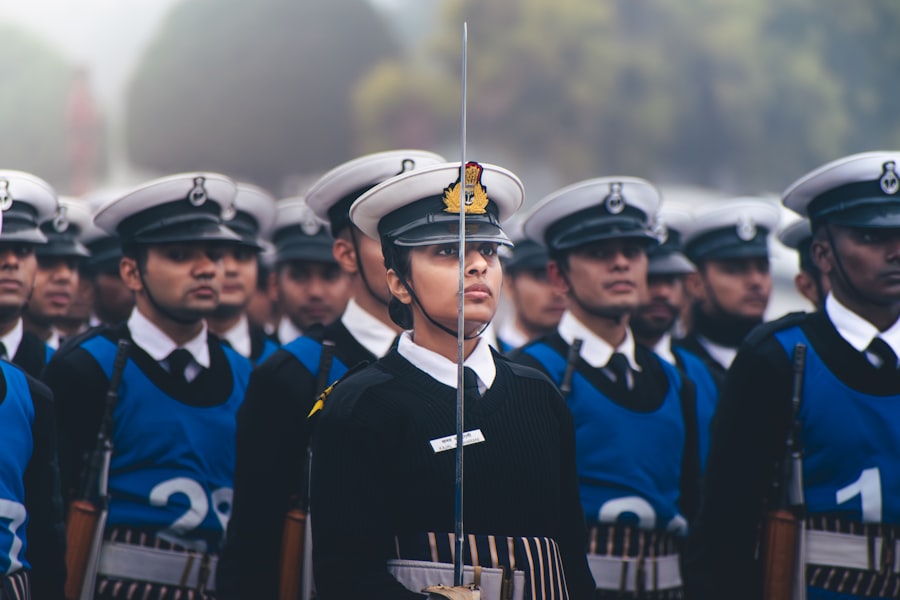
Sun Tzu’s “The Art of War” remains one of the most influential texts on military strategy, transcending time and culture. His teachings emphasize the importance of understanding both oneself and one’s enemy, advocating for a strategic approach that prioritizes intelligence and deception over brute force. Sun Tzu’s assertion that “all warfare is based on deception” highlights the necessity of psychological tactics in achieving victory.
This principle has been adopted by military leaders throughout history, demonstrating its enduring relevance in both ancient and modern contexts. Furthermore, Sun Tzu’s emphasis on adaptability is a cornerstone of effective military strategy. He advocates for flexibility in response to changing circumstances on the battlefield, urging commanders to remain fluid in their tactics.
This adaptability is particularly pertinent in contemporary warfare, where rapid technological advancements and shifting geopolitical landscapes require military leaders to think critically and adjust their strategies accordingly. The wisdom contained within “The Art of War” continues to resonate with military strategists, business leaders, and policymakers alike.
Lessons from Napoleon: The Power of Logistics and Supply
| Lesson | Explanation |
|---|---|
| Effective Planning | Napoleon’s meticulous planning ensured that his armies were well-supplied and could move quickly. |
| Strategic Positioning | By strategically positioning supply depots, Napoleon was able to maintain a steady flow of resources to his troops. |
| Flexibility | Napoleon’s ability to adapt his supply lines to changing circumstances allowed him to sustain his campaigns. |
| Communication | Effective communication between supply units and the front lines was crucial for Napoleon’s logistical success. |
Napoleon Bonaparte’s military campaigns are often studied for their innovative tactics and grand strategies; however, one of his most significant contributions to warfare was his understanding of logistics. Napoleon recognized that successful military operations depended not only on battlefield prowess but also on the efficient management of supplies and resources. His campaigns demonstrated that an army’s ability to sustain itself through effective logistics could determine the outcome of conflicts.
The disastrous invasion of Russia in 1812 serves as a cautionary tale about the perils of neglecting supply lines and overextending forces. Additionally, Napoleon’s use of mobility transformed how armies operated. He emphasized rapid troop movements and decisive engagements, allowing him to outmaneuver opponents who relied on traditional methods.
This focus on speed and efficiency reshaped military doctrine, highlighting the importance of logistics in modern warfare. The lessons learned from Napoleon’s campaigns continue to inform contemporary military operations, where supply chain management remains a critical component of success on the battlefield.
The Impact of Technology on Military Tactics
The evolution of technology has profoundly influenced military tactics throughout history. From the introduction of gunpowder to the development of advanced weaponry, technological advancements have reshaped how wars are fought. The transition from traditional hand-to-hand combat to firearms marked a significant shift in tactics, necessitating new strategies for engagement.
The advent of artillery changed the dynamics of siege warfare, allowing armies to breach fortified positions with greater efficiency. In recent decades, technology has continued to revolutionize military operations. The rise of drones, cyber warfare capabilities, and precision-guided munitions has transformed how conflicts are conducted.
Modern militaries must adapt to these advancements by integrating new technologies into their strategies while also considering the ethical implications of their use. As warfare becomes increasingly reliant on technology, understanding its impact on tactics is essential for military leaders seeking to maintain an edge in an ever-evolving landscape.
Learning from the World Wars: The Evolution of Modern Warfare

The World Wars marked a turning point in military history, showcasing the evolution of warfare on an unprecedented scale. World War I introduced trench warfare and highlighted the devastating effects of industrialized conflict. The static nature of trench warfare necessitated new tactics and strategies as armies struggled to break through enemy lines.
This period underscored the importance of morale, innovation, and adaptability in overcoming challenges on the battlefield. World War II further advanced military tactics with the introduction of combined arms operations and mechanized warfare. The Blitzkrieg strategy employed by Germany demonstrated how speed, coordination, and surprise could lead to rapid victories.
Additionally, the use of air power became a critical component in modern warfare, influencing ground operations and strategic bombing campaigns. The lessons learned from these global conflicts continue to shape contemporary military doctrine, emphasizing the need for flexibility, coordination among different branches of the armed forces, and an understanding of the broader geopolitical context.
Guerrilla Warfare: Lessons from Vietnam and Afghanistan
Guerrilla warfare has emerged as a significant form of conflict in modern times, particularly evident in the Vietnam War and more recent engagements in Afghanistan. These conflicts illustrate how smaller, less conventional forces can effectively challenge larger, more technologically advanced militaries through unconventional tactics. The Viet Cong’s ability to blend into civilian populations and utilize their knowledge of local terrain exemplifies how guerrilla fighters can exploit their advantages against traditional forces.
In Afghanistan, insurgent groups have similarly employed guerrilla tactics to counter foreign intervention. The use of ambushes, hit-and-run attacks, and improvised explosive devices (IEDs) has proven effective against conventional forces. These experiences highlight the importance of understanding local dynamics and cultural contexts when engaging in conflict.
Military leaders must recognize that success in such environments often requires more than just superior firepower; it necessitates building relationships with local communities and addressing underlying grievances.
The Role of Leadership in Military Success
Leadership plays a pivotal role in determining the outcomes of military campaigns. Effective leaders inspire their troops, instill confidence, and foster a sense of unity within their ranks. Historical figures such as Alexander the Great and General Dwight D.
Eisenhower exemplify how strong leadership can galvanize forces toward achieving common objectives. Their ability to communicate a clear vision and adapt to changing circumstances contributed significantly to their successes on the battlefield. Moreover, leadership extends beyond individual commanders; it encompasses organizational culture within military institutions.
A culture that encourages innovation, accountability, and collaboration can enhance overall effectiveness in operations. Leaders must also prioritize ethical considerations in decision-making processes, recognizing that their choices can have far-reaching consequences for both soldiers and civilians alike.
The Influence of Geography on Military Campaigns
Geography has always played a crucial role in shaping military campaigns throughout history. Terrain features such as mountains, rivers, and forests can significantly impact troop movements and strategies employed during conflicts. For instance, Napoleon’s invasion of Russia was hampered by harsh winter conditions and vast distances that strained supply lines.
Similarly, mountainous terrain in Afghanistan has posed challenges for conventional forces attempting to navigate complex landscapes while engaging insurgents. Understanding geography also involves recognizing how it influences political dynamics and alliances between nations. Geographic proximity can foster cooperation or rivalry among states based on shared interests or historical grievances.
Military planners must consider these geographical factors when devising strategies for engagement or defense against potential threats.
The Ethics of War: Lessons from the Geneva Conventions
The ethics surrounding warfare have evolved significantly over time, with international agreements such as the Geneva Conventions establishing guidelines for humane conduct during armed conflict. These conventions emphasize the protection of civilians, prisoners of war, and those who are wounded or sick—principles that reflect a growing recognition of human rights even amidst war’s chaos. Studying these ethical frameworks is essential for contemporary military leaders who must navigate complex moral dilemmas during operations.
Understanding the implications of actions taken during conflict can help prevent atrocities and promote accountability within armed forces. By adhering to established ethical standards, militaries can maintain legitimacy in their operations while fostering trust among local populations.
Applying Historical Lessons to Contemporary Military Challenges
The lessons gleaned from studying military history are invaluable for addressing contemporary challenges faced by armed forces worldwide. As conflicts become increasingly multifaceted—encompassing issues such as terrorism, cyber threats, and hybrid warfare—military leaders must draw upon historical precedents to inform their strategies effectively.
This historical perspective encourages critical thinking about current practices while fostering innovation within military institutions. Ultimately, applying these lessons ensures that armed forces are better equipped to navigate an uncertain future while upholding their commitments to ethical conduct and effective leadership in times of conflict.
In exploring the topic of military lessons from the past, it’s essential to consider various perspectives and analyses that shed light on historical strategies and their modern applications. An insightful article that complements this discussion can be found on the website “In The War Room.” This platform offers a range of articles that delve into military history and strategy. For instance, one such article can be accessed through this link, providing readers with a deeper understanding of how past military experiences can inform current and future military strategies. By examining these lessons, military professionals and enthusiasts alike can gain valuable insights into the complexities of warfare and the importance of learning from historical precedents.
FAQs
What are some military lessons from the past?
Some military lessons from the past include the importance of strategic planning, the value of intelligence gathering, the impact of technology on warfare, and the significance of adaptability and flexibility in military tactics.
How have past military strategies influenced modern warfare?
Past military strategies have influenced modern warfare by shaping the way military forces plan and execute operations, develop technology and weaponry, and train their personnel. Lessons learned from historical battles and conflicts continue to inform contemporary military doctrine and tactics.
What are some examples of successful military strategies from history?
Some examples of successful military strategies from history include the use of surprise attacks, the implementation of flanking maneuvers, the utilization of defensive fortifications, and the employment of deception and misinformation to mislead the enemy.
How have technological advancements impacted military tactics throughout history?
Technological advancements have significantly impacted military tactics throughout history by introducing new weapons and equipment, improving communication and reconnaissance capabilities, and changing the nature of warfare from close combat to long-range engagements.
What role does adaptability play in military success?
Adaptability plays a crucial role in military success by enabling forces to respond to changing circumstances, adjust their tactics to counter evolving threats, and overcome unexpected challenges on the battlefield. Military organizations that prioritize adaptability are better equipped to achieve their objectives.
